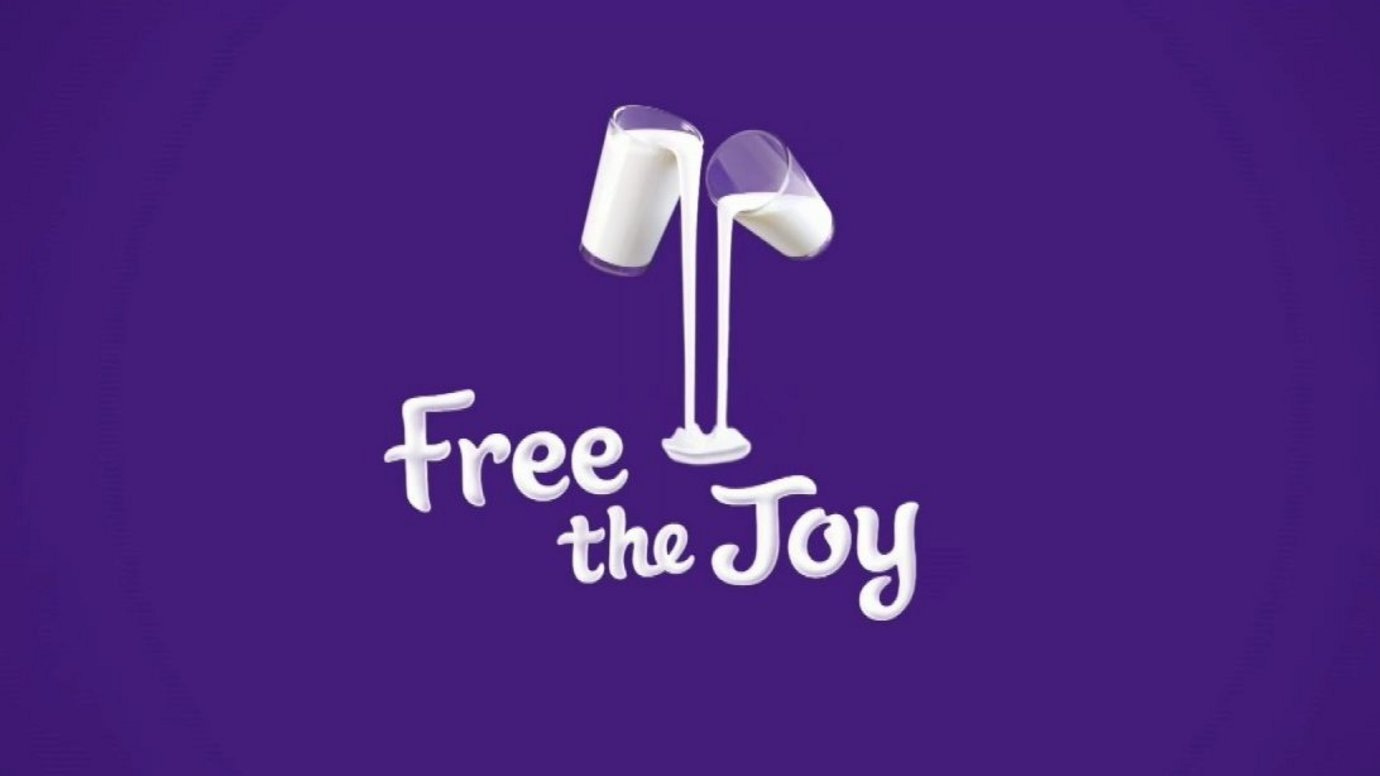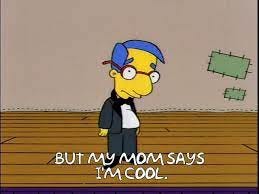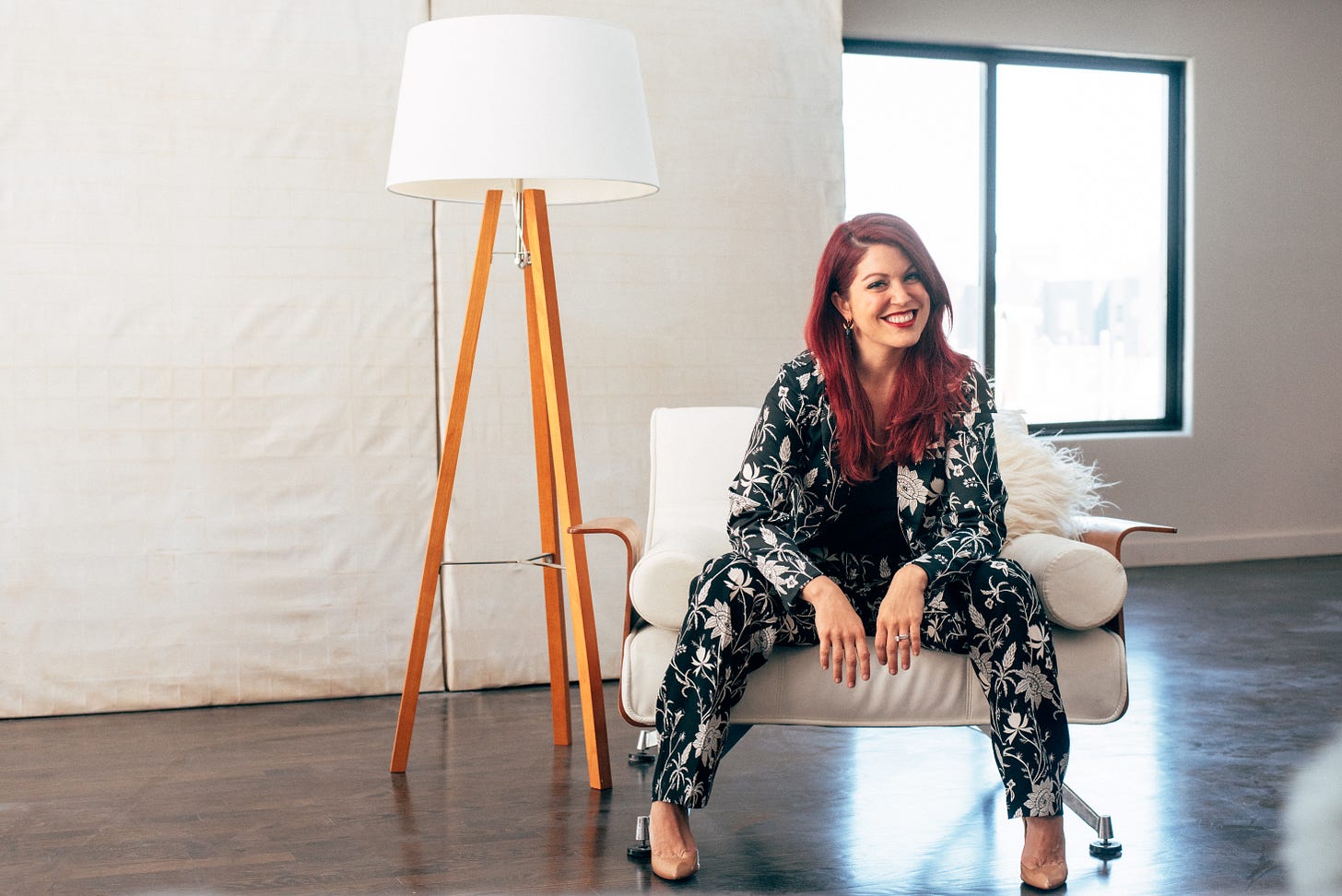👋, I’m Kimberly. I’ve been creating obsession-worthy brands for the past fifteen years. And now, I’m giving away my secrets every week in this newsletter.
This weekend, the Bomb Cyclone hit the West Coast—pelting us with nonstop rain and tree-toppling winds.
In California, we’re happy to have rain to drown out the wildfire season.
And the rain was fun at first. It made for the kind of day where you cozy up inside and build a pillow fort in your son’s room (which we did!).
But, twelve hours into the storm, water started pouring in our dining room window and creeping through the side walls—overflow from our unluckier upstairs neighbors, who had a few inches drowning their dining space.
Rain is good. But too much of a good thing can equal a bad thing.
This leads me to this week’s newsletter topic.
Words that used to be good…
But they’ve been used so much in marketing—that they equal a bad thing.
I’m calling it my Nope List.
Before I begin, note that this Nope List is in no way exhaustive. There are definitely way more words that could be added here.
Also note—this list is never final. It is a living document, that can and should be added to as new words make themselves into the Millennial-GenZ-GenAlpha zeitgeist.
Let’s begin with…
😊 FUN 😊
My favorite illustration of the word “fun” backfiring has to be Kawhi Leonard’s epic reference to himself in an interview.
For those who are not familiar, Kawhi Leonard is an NBA player who is not much of a talker. His matter-of-fact persona had earned him the most taciturn reputation in the league.
At a press conference in 2018, a reporter asked Kawhi to describe himself to the fans in Canada who might not know him that well.
“A lot of people up here don’t know much about you,” Doug Smith of The Toronto Star said to Leonard. “How would you describe yourself, and what would you like people to know about you?”
“I’m a fun guy,” Leonard replied.
“Obviously, I love the game of basketball, but there are more questions that you would have to ask in order for me to tell you about myself. I just can’t give you a whole spiel.”
Kawhi followed up his response with an awkward and befuddling laugh, which quickly became the stuff memes are made of.
Kawhi seems like a very nice guy.
But if you have to say that you’re fun—you’re probably not really.
Don’t make it awkward.
🔥 INNOVATIVE 🔥
Board of Innovation, a global consulting firm, estimates that there are about 70,000 books on innovation available for purchase right now.
Technically, people aren’t in the wrong to be using the word so much, because it has a super broad definition.
innovate (verb)
in·no·vate | \ ˈi-nə-ˌvāt \
: to make changes : do something in a new way
Viewed this way, literally anything you change about how you make a product or perform a service could be considered “innovative.”
But this doesn’t mean you should say it, just like everyone else is.
You’ll be better off “innovating” on your descriptions, rather than using this word that’s become so common—people glaze over it.
💣 DISRUPTIVE 💣
This one really started to gain traction in the early days of DTC.
Warby Parker disrupted the eye care industry! Dollar Shave Club disrupted the shaving industry! ThirdLove disrupted the underwear industry!
You can even read this Fast Company article about not one, not two, but six brands disrupting the toilet paper industry!
Once reserved for VC pitch decks, the word “disruptive” made itself into the vocabulary of customer marketing, where it served as code for “young upstart company taking on the old stodgy industry,” the classic David and Goliath scenario.
But this word has very little meaning for your consumers.
Your customers care about what you’re doing for them personally, not about your brand’s positioning in the marketplace.
So, send this buzzword back to your pitch decks where it belongs.
Although, scratch that…
I’d say “disruptive” has become a word that’s so common and overused that investors don’t see exciting meaning in it, either.
💪 EMPOWER 💪
This one is more recent—and has gained more and more momentum as of late.
empower (verb)
in·no·vate | \ ˈi-nə-ˌvāt \
: to give power to (someone)
: to make someone stronger and more confident
: to promote the self-actualization or influence of
It’s the stuff today’s mission statements are quite literally made of.
The word “empower” makes more sense for companies in certain industries—like the beauty world, where looking your best naturally makes you feel even more confident.
And if you were to take a look at the many, many brands books I’ve created for my clients—I have 100% used this word.
But in the past year especially, the word “empower” has become so standard that it makes me roll my eyes a bit.
Now, it seems that every company from my toothbrush brand to my baby’s diaper brand wants to “empower” me to be my best self.
The use of the word “empower” in marketing has also become borderline offensive to some people, who ask “Why do I need a brand to empower me, when my power comes from within?”
With that, I empower us all to stop empowering!
💗 JOY 💗
Like “empower,” this is another word I’ve seen take off tremendously in the past few years.
And others have noticed it, too.
Just Eat tells us of the “joy of the takeaway”
Cupcake Vineyards asks us to “choose joy”
Aperol believes that “together we joy”
Domino’s “owns the emotional territory of joy”
Halifax recently told us all of the “joy of that new home feeling”
Fintech companies tell us of the “joy of digital banking”
Citibank has created “moments of joy” pop-up customer experiences
There’s a reason people like it. The word joy is very positive, friendly, and emotive.
It is also fluffy and easy and so non-specific that it can apply to practically any product or service in any industry.
It sounds a bit less generic than “happy”—but really, it isn’t.
So, if your company’s mission is “to empower people and create joy,” please book a time with me right now—and I’ll gift you thirty minute consult to talk through how we can make your statement stronger.
🏆 BEST IN CLASS 🏆
When I see this phrase—I say…
“Hmm, ok. But how are you defining your class?
And who decided you were best in it, exactly?”
These days, there are so many types of legitimate seals and awards and organizations that your company can be involved in to help add to its credibility.
An empty phrase like “best in class” with no further explanation reeks of marketing-only.
3 Ways to Flip These Words
If you’re currently one of the many brands using these words, it’s time for you to change them.
Here are a few ways to rethink your vocabulary.
Show, Don’t Tell
How can you use all of the marketing tools available to you to show your customer that you are embodying the spirit of one of these words?
For example, if you really think you’re a “fun” brand:
How can you show that you’re fun with your visuals?
How can you show that you’re fun with your language?
How can you show that you’re fun with your customer experience?
How can you show that you’re fun with your product itself?
Try the 5 Why’s
Take any of the words above, like “empower,” and ask yourself “Why” five times.
Here’s an example:
Our mission is to empower people.
Why do you want to empower people?
Because I want them to feel more confident.Why do you want people to feel more confident?
So that they feel comfortable making bolder decisions.Why do you want them to feel comfortable making bolder decisions?
Because bolder decisions are more likely to have a major impact.Why are bolder decisions more likely to have a major impact?
Because people pay more attention to them.Why do people pay more attention to them?
Because the changes are more significant.
And here’s what your revised mission statement could look like
Our mission is to make people confident about being decisive—so they feel comfortable making big, bold, attention-grabbing changes that impact the world.
Be As Specific As You Possibly Can
When you’re telling a story or describing a scene, adjectives and details are what really make it come alive.
For example, read the following paragraph:
It’s nighttime. There are stars in the sky, the moon is on the right of the canvas. The wind is blowing. A patch of trees is in the foreground to the left, and a village is in the background in front of the mountains.
Now read this one:
It’s nighttime. Bright yellow stars twinkle in the multi-toned blue sky, and the big yellow moon floats on the right of the canvas. The white wind is curling and swirling. A patch of wavy dark green trees rises in the foreground to the left, and a small quaint village with a tall white church steeple rest in the background in front of the rolling mountains.
Both paragraphs are describing this famous work of art—but the second is much more specific.
Let’s say your company’s product or service is innovative—which, by the definition we reviewed earlier, it most likely is.
Write down every single way your company is innovating, and drill down into the details… right down to the drill you’re using, if that’s something special.
The more specific you can be, the better.
In Closing
Let’s circle back to that Bomb Cyclone.
A little drizzle is refreshing.
A rainy afternoon can be downright pleasant.
But when a serious deluge starts—it’s time to get out of the way… and expand your marketing vocabulary.
If you’re finding this newsletter valuable, consider sharing it with friends, or subscribing if you aren’t already.
About Me
I help early stage founders create the kind of brands that get customers so obsessed, they’ll do your advertising for you.
Based on my experience founding my own consumer brand, I developed The Branding Sprint—a uniquely collaborative, streamlined, and agile approach to brand creation.
Click here to learn more about The Branding Sprint, or schedule a call with me.













